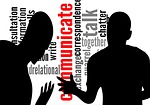Crisis: a turning point in the course of anything; decisive or crucial time; a time of great danger or trouble, whose outcome decides whether possible bad consequences will follow. With the term “crisis” thus defined, has the public education system been in a crisis? Hell yes! And repeatedly!
And for those that have been paying attention to “education reform” for more than a decade or two, you understand why I reference the “Groundhog Day” phenomenon — the déjà vu feeling of having to wake each day and repeat the same scene over-and-over. Well, the Bill Murray character in the movie was on a cakewalk compared to the real nightmare of decades upon decades of debate about whether or not public education is in a true crisis.
“Whose outcome decides whether possible bad consequences will follow”— please, think about it. How many times have you heard, especially in relationship to No Child Left Behind, that there were unintended consequences?
In the American Education Reform War, one side defines the crisis as mediocre international test scores while the other side claims there is no crisis at all. Meanwhile, around kitchen tables there are mothers, fathers, grandparents, and students fretting about and struggling with problems related to education. Many times these same people have solutions that can’t be done without the cooperation of the public education system. And without support and help, they know what the consequences will be. These people face a crisis. The system is not responding to them.


Pingback: New Testing Makes No Sense | The Crucial Voice of the People